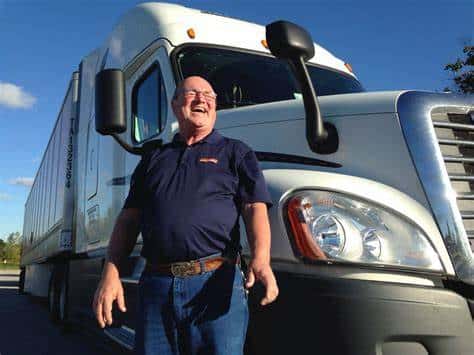
31 July 2020 posted by Recovery Partners
66 and still going strong: How this trucker got back into the driver’s seat despite injury, unemployment and COVID-19. A wrist injury, two years of unemployment and the mass disruption caused by the COVID-19 pandemic would be hurdles for anyone, but *Barry didn’t let them signal the end of his career as a truck driver in Victoria.
A wrist injury put a spanner in the works for Barry
66-year-old Barry had been a truck driver all his life but was let go from his former job after a wrist injury placed some serious limitations on the sort of work he could do. After his injury, Barry was out of work for almost two years, although he was given several work trials during this period. ‘Barry’s age and physical health were the main barriers to re-employment,’ says Tonia Portaro, Senior Rehabilitation Consultant at Recovery Partners. ‘He was motivated, experienced and reliable, but he was close to retirement age and he had some pre-existing health issues that impacted his mobility.’
Restrictions on capacity
Barry’s GP had signed off on his return to suitable duties with restrictions, stating that he could lift up to 8kg with his right hand and up to 10kg with his left hand. Accordingly, it wasn’t the driving itself that was an issue, just the other tasks that often came with a driving role. ‘Barry wanted to keep driving trucks because that’s all he’d ever known,’ says Tonia. ‘However, a lot of truck driving roles involve heavy lifting and using your hands to secure tarps or ropes, which Barry just couldn’t do anymore. Essentially, the types of trucks that don’t require the driver to do any lifting are waste trucks or water trucks, or those where the loading and unloaded is automated,’ says Tonia. ‘Everything else is out.’
A positive attitude helped Barry stay the distance
Fortunately, Barry was able to maintain a positive attitude, which helped him stay determined and focused, even when COVID-19 caused major ripples in the transport and logistics industry. ‘Barry had a real ‘give it a go’ attitude towards any opportunities,’ says Tonia. ‘He took on any trial that was offered, went to interviews and followed up leads. He was clear about what he wanted and what he was capable of. He just needed to be given a chance.’
The ideal job
Eventually, Tonia and Barry contacted an employer who recognised the value in Barry’s years on the job and gave him a trial in a role that involved no lifting at all. ‘The goods were delivered into and out of the truck on a conveyor belt and the driver just had to supervise,’ says Tonia, ‘so it was the ideal job for Barry.’ As it turned out, the employer agreed, and Barry was given the job. ‘He was really pleased, and I was proud. His efforts had paid off and his career wasn’t over,’ says Tonia.
Do you want to see positive outcomes like this for your worker or client? If you’re an insurer or employer looking for positive outcomes like this one, get in touch with Recovery Partners.
Our services are available nationwide. For more information about our services contact us.
Our consultants love to have a chat, so go ahead and give us a call on 1300 OHS RTW (647 789) or email enquiries@rrp.com.au
*Names have been changed to protect the privacy of the individuals involved in this case.
Disclaimer – these articles are provided to supply general safety information to people responsible for OHS in their organisation. They are general in nature and do not substitute for legal and/or professional advice. We always suggest that organisations obtain information specific to their needs. Additional information can be found at https://www.safeworkaustralia.gov.au/
Recent Posts
Why protecting your employee’s mental health matters
4 April 2024What is the difference between psychosocial safety and psychological safety
25 March 2024The Australian Safety Index Survey 2024 Results
21 March 2024What is the difference between Job Task Analysis and Fitness for Duties?
15 March 2024Navigating Workplace Safety Excellence – Key Takeaways